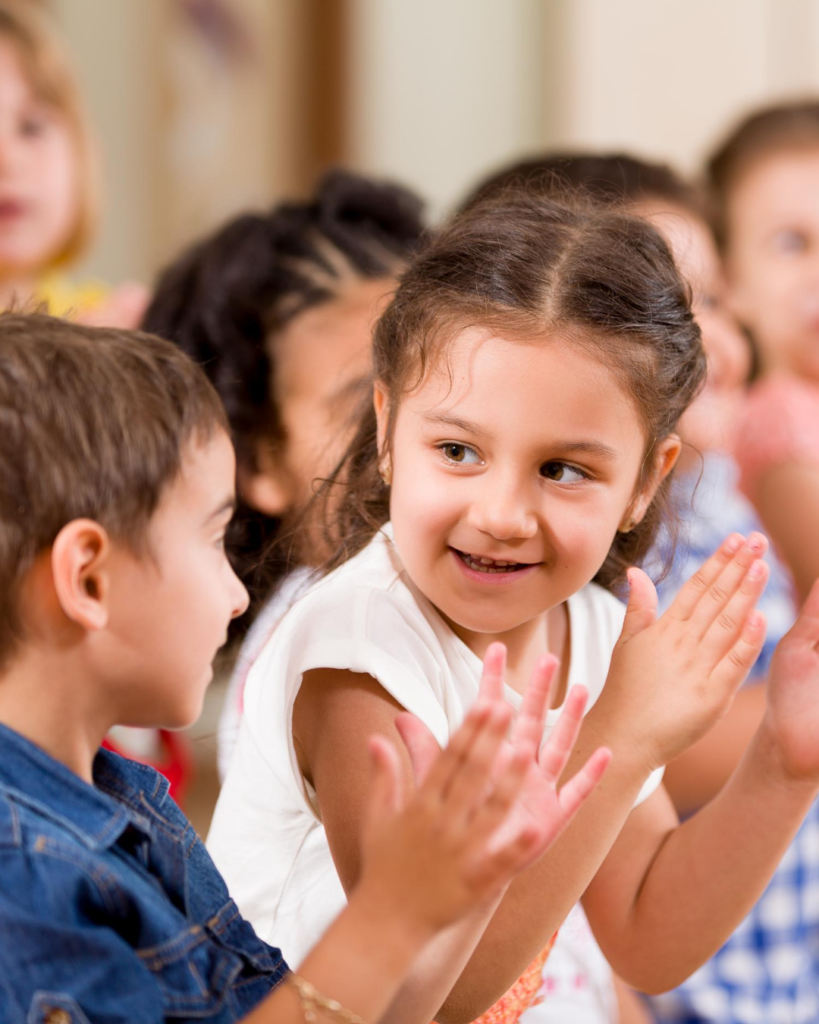The planes of development
In studying the children’s development, Montessori came to the conclusion that as humans, we go through four distinct periods of growth. These are known as the Planes of Development (Montessori, 2012). Each plane spans a period of six years and each has its own distinctive characteristics and needs. Our Montessori classrooms are prepared in such a way that they meet these developmental needs. Activities are provided that offer children the means whereby they may satisfy these needs. The classroom is seen as a microcosm of society, the first society the children learn to contribute to and participate in.
Montessori also identified a number of tendencies which she termed ‘the human tendencies of (wo)man’ (Gettman, 1987) which are unique to Homo Sapiens and which promote our human development. These tendencies drive us to explore our environments and to work towards our ultimate quest for independence.
Babies and toddlers

At birth, human babies are completely dependent on a parent/caregiver for survival. This is a necessary dependency which provides infants with time to adapt to the new environment they find themselves in. Developing independence at this stage is a process determined by the physical abilities of the infant. Completely helpless at birth, the baby’s first glimmerings of independence are the ability to sit, stand and walk. The babies strive for this first independence through movement.
Once able to walk and explore their surroundings, the toddler further develops independence through gravitating towards repeated actions which are the foundation of understanding their world. Piaget referred to these actions as schemas (Mussen et al., 1984). Toddlers are often seen repeating actions like opening and closing, pushing, pulling, carrying, etc. This work is developing awareness of the world and how it works. These movements are a further independence and serve to pave the way for the children’s cognitive development. This is a critical step in developing independence – knowing how they connect and engage with the world around them.
Preschoolers

By the age of three, the child has achieved independence in a number of ways. This child’s quest is to now develop independence within a new environment. Montessori calls the child between the ages of three and six years a social embryo (Montessori, 2012). This child is in an embryonic phase for the acquisition of social skills. Just as the physical embryo (foetus) needed a special environment for optimal development, so too does the preschooler need a space filled with other social embryos who are learning to adapt to the new world of social interactions. This is where children reach social independence. They come to realise that this is their classroom, and their activities. The egocentrism of the toddler is over as the children work together creating what Montessori termed social cohesion (Montessori, 2012). The independence expressed during this stage is in the ability of the children to help themselves, while at the same time contributing to the class.
This is the work of the child. To create the wo/man s/he will be one day. This is a time of character development. Children who have been afforded the freedom to make choices and the space to function within the ground rules of this microcosm of society are developing autonomy in both their actions and in their thinking.
Primary children

Montessori described the ages of 6-12 years as a happy time. A calm period where the children are physically more robust. Primary-aged children are probably the most carefree in terms of the demands of their development. The world becomes their classroom as they begin to venture out and explore bigger and bigger ideas through the Great Lessons which underpin the primary Montessori curriculum for this age.
The children’s quest for independence during this time moves away from physical independence to intellectual independence. Providing these children with opportunities to tackle big projects is the perfect springboard for this development. Being able to classify their world and the understanding of how they fit into our world is vital to the growing independence of this child. The first notion of inter-dependence is happening during the later years of this period. Children begin to see how their actions may benefit another and how that in turn benefits society and themselves.
Adolescents

During adolescence, we have a second opportunity to nurture the developing character of the young adult. Again, a specially prepared environment is needed. In this case, it is less about the brick and mortar and more about the guides who work with these young people. The preparation of the adult’s spirit in recognising the vulnerability of adolescents and being able to offer a safe space where they can express themselves without judgement and learn from their peers and guides helps to prepare the path for them to journey into adulthood with confidence.
Adolescents are developing their independence in a more abstract way here. They have the indirect preparation of their childhood years. The established physical independence and the developing intellectual independence are cornerstones to the focus in this age group of interdependence. Realising that they are on the brink of adulthood prompts children during this time to expand their thinking beyond the safety of their home and school environments and causes them to seek answers to bigger questions. This is where the specially trained Montessori adolescent guide plays such an important role in encouraging freedom of expression (within the ground rules of respect) and provokes the discussions to expand the consciousness of these children. Developing an awareness of the interdependence of humans stems from these crucial conversations.
The journey from helplessness to understanding and contributing to the interdependence of the human race is one that takes a lifetime. Our work as the adult is to provide the best possible spaces for our children to develop through the stages of independence. Montessori saw this as a foundation for education children in peace. We can all truly make a difference if we remember this.
– Heidi van Staden –
31 July 2020
Reference List
Gettman, D. (1987) Basic Montessori Learning Activities for Under-Fives Oxford: ABC-Clio
Montessori, M. (2012) The 1946 London Lectures Amsterdam: Montessori-Pierson Publishing Company
Mussen, P., Conger, J., Kagan, J. and Huston, A. (1984) Child Development and Personality USA: Harper and Row



